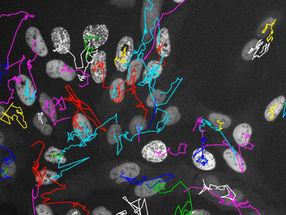Molecular Imaging, Inc. Enters Relationship with Dana-Farber Cancer Institute to Expand Luciferase-reporter Cancer Cell Lines for Preclinical in vivo Imaging
molecular imaging, Inc., a specialty contract research organization providing multi-modality preclinical in vivo imaging services to pharmaceutical and biotechnology companies, announced that it has entered into a licensing agreement with Dana-Farber Cancer Institute to access a substantial number of luciferase-enabled cancer cell lines developed at Dana-Farber. Access to these unique lines dramatically expands Molecular Imaging's ability to apply bioluminescent imaging technology to a broad array of cancer disease models, including expanded capability in various leukemias, multiple myeloma, triple-negative breast cancer, glioma and melanoma.
Molecular Imaging, Inc. will be collaborating with Andrew Kung, MD, PhD and Scott Armstrong, MD, PhD to further develop and make available these, and other cell lines, to improve the quantification and predictive power of bioluminescent imaging in cancer. Dr. Kung is Director of the Lurie Family Imaging Center at Dana-Farber, is an Associate Professor of Pediatrics at Dana-Farber, Children's Hospital Boston and the Harvard Medical School. Dr. Armstrong is an Associate Professor of Pediatrics at Dana-Farber, Children's Hospital Boston and Harvard Medical School and is co-director of both the Cancer Program/Harvard Stem Cell Institute and Dana-Farber/Harvard Cancer Center's Leukemia program.
Molecular Imaging expects to nearly triple its validated luc-reporter cell line library by end of first quarter 2012. For Molecular Imaging, this expansion in luc-reporter lines complements the incorporation of fluorescence molecular tomography (FMT) into the company's array of imaging modalities. The company will have a number of FMT imaging-validated disease models available by early 2012 to aid in R&D decision-making. Molecular Imaging also offers MRI, micro-CT, micro-PET, bioluminescence and 2D fluorescence to provide the benefits of quantitative anatomical and functional imaging to nearly 100 customers. Since Molecular Imaging provides these services with all imaging modalities in one location, the multiplier benefit of multi-modality imaging is readily available to customers, as well.
Other news from the department science

Get the life science industry in your inbox
By submitting this form you agree that LUMITOS AG will send you the newsletter(s) selected above by email. Your data will not be passed on to third parties. Your data will be stored and processed in accordance with our data protection regulations. LUMITOS may contact you by email for the purpose of advertising or market and opinion surveys. You can revoke your consent at any time without giving reasons to LUMITOS AG, Ernst-Augustin-Str. 2, 12489 Berlin, Germany or by e-mail at revoke@lumitos.com with effect for the future. In addition, each email contains a link to unsubscribe from the corresponding newsletter.






















































